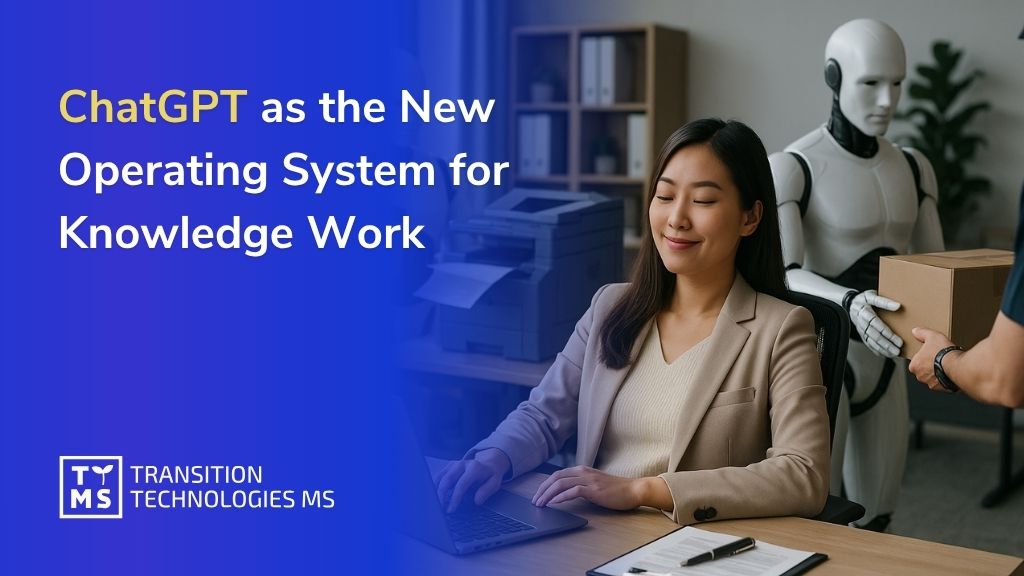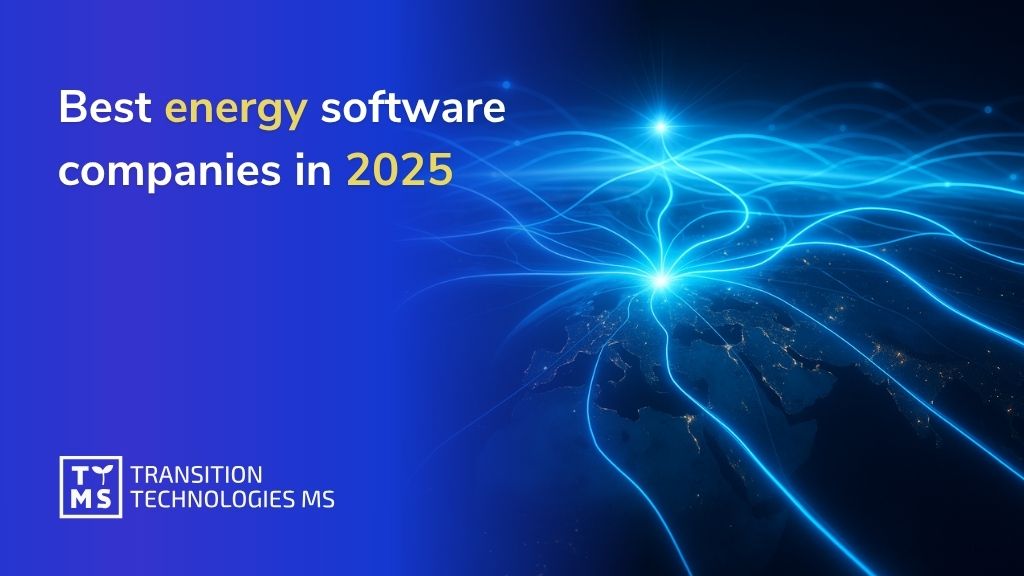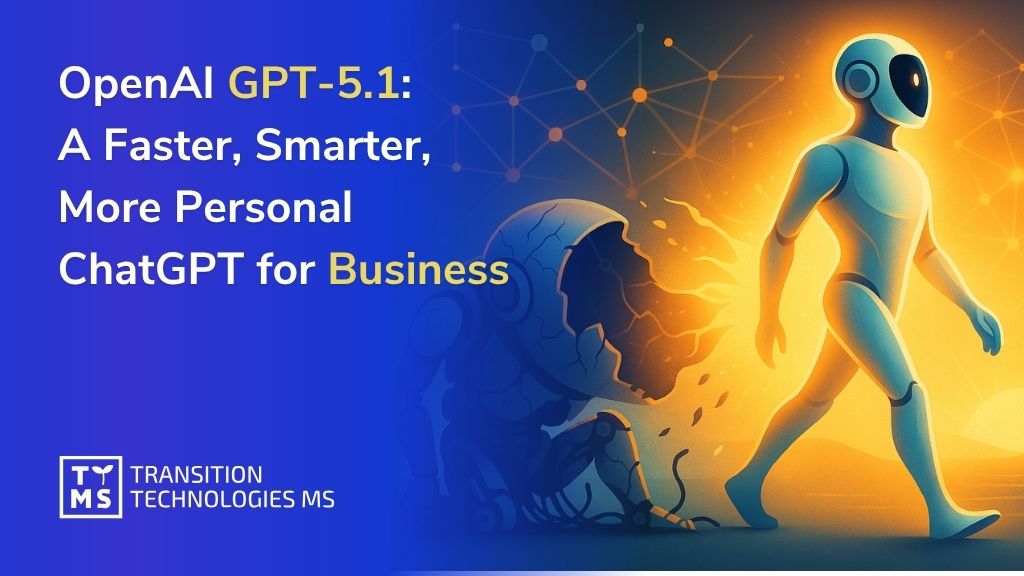ChatGPT Pulse: Proactive AI Briefings Accelerating Enterprise Digital Transformation
OpenAI’s ChatGPT Pulse is a new feature that delivers daily personalized AI briefings – a significant innovation that shifts AI from a reactive tool to a proactive digital assistant. Instead of waiting for user queries, Pulse works autonomously in the background to research and present a curated morning digest of relevant insights for each user. OpenAI even calls it their first “fully proactive, autonomous AI service,” heralding “the dawn of an AI paradigm” where virtual agents don’t just wait for instructions – they act ahead of the user by synthesizing data and surfacing critical updates while decision-makers sleep.
For innovation managers and executives, this represents more than just a convenient feed – it marks a strategic evolution in how information flows and decisions are supported. By moving from on-demand Q&A to continual, tailored insight delivery, Pulse enables earlier trend detection and timely decision support. One analysis notes that with AI-driven practices, “decision cycles shrink from weeks to hours” and “insights become proactive rather than reactive,” leading to more agile, evidence-based management. In short, AI is no longer confined to answering questions after the fact; it’s now an active partner in helping leaders get ahead of fast-moving developments.
1. How ChatGPT Pulse Works: Personalized Daily AI Research and Briefings
Personalized daily research: ChatGPT Pulse conducts asynchronous research on the user’s behalf every night. It synthesizes information from your past chats, saved notes (Memory), and feedback to learn what topics matter to you, then delivers a focused set of updates the next morning. These updates appear as *topical visual cards* in the ChatGPT mobile app which you can quickly scan or tap to explore in depth. Each card highlights a key insight or suggestion – for example, a follow-up on a project you discussed, a news nugget in your industry, or an idea related to your personal goals.
Integrations and context: To make suggestions smarter, Pulse can connect to your authorized apps like Google Calendar and Gmail (if you choose to opt in). With calendar access, it might remind you of an upcoming meeting and even draft a sample agenda or talking points for it. With email access, it could surface a timely email thread that needs attention or summarize a lengthy report that arrived overnight. All such integrations are off by default and under user control, reflecting a privacy-first design. OpenAI also filters Pulse’s outputs through safety checks to avoid any content that violates policies, ensuring your daily briefing stays professional and on-point.
User curation: Pulse is not a one-size-fits-all feed – you actively curate it. You can tell ChatGPT directly what you’d like to see more (or less) of in your briefings. Tapping a “Curate” button lets you request specific coverage (e.g. “Focus on fintech news tomorrow” or “Give me a Friday roundup of internal project updates”). You can also give quick thumbs-up or thumbs-down feedback on each card, teaching the AI which updates are useful. Over time, this feedback loop makes your briefings increasingly personalized. Not interested in a particular topic? Pulse will learn to skip it. Want more of something? A thumbs-up will encourage similar content. In essence, users steer Pulse’s research agenda, and the AI adapts to provide more relevant daily knowledge.
Brief, actionable format: Each morning’s Pulse typically consists of a handful of brief cards (OpenAI suggests about 5-10) rather than an endless feed. This design is intentional – the goal is to give you the day’s most pertinent information quickly, not to trap you in scrolling. After presenting the cards, ChatGPT explicitly signals when the briefing is done (e.g. “That’s all for today”). You can then dive deeper by asking follow-up questions on a card or saving it to a chat thread, which folds it into your ongoing ChatGPT conversation history for further exploration. Otherwise, Pulse’s cards expire the next day, keeping the cycle fresh. The result is a concise, focused briefing that respects your time, delivering value in minutes and then letting you get on with your day.
2. ChatGPT Pulse for Digital Transformation: Turning Data Into Actionable Intelligence
From a digital transformation perspective, ChatGPT Pulse represents a powerful tool for driving smarter, faster decision-making across the enterprise. By automating the gathering and distribution of insights, Pulse shortens the path from data to decision. Routine informational tasks that might have taken analysts days or weeks – compiling market trends, monitoring KPIs, scanning news – can now be distilled into a morning briefing. Organizations that adopt such AI tools often find that decision cycles shrink dramatically, enabling a more responsive and agile operating model. Indeed, when companies successfully implement AI in their processes, “decision cycles shrink from weeks to hours” and teams can refocus on strategy over tedious data prep. In practical terms, this means leaders can respond to opportunities or threats faster than competitors who rely on traditional, slower information workflows.
Enterprise surveys are already showing the impact of AI on digital transformation efforts. According to McKinsey, nearly two-thirds of organizations have launched AI-driven transformation initiatives – almost double the adoption rate of the year before – and those using generative AI report tangible benefits like cost reductions and new revenue growth in the business units deploying the tech. This underscores that proactive AI systems are not just hype; they are delivering material business value. With Pulse proactively delivering tailored intel each day, companies can foster a more data-driven culture where employees at all levels start their morning armed with relevant knowledge. Over time, this ubiquitous access to insights can enhance everything from operational efficiency to customer experience, as decisions become more informed and immediate.
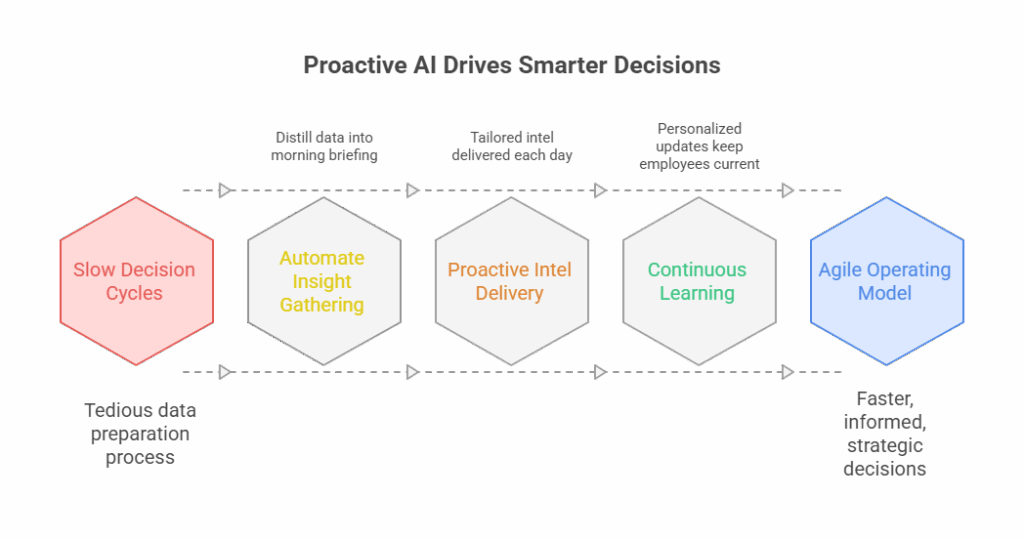
Another crucial benefit is continuous learning and innovation. In a fast-evolving digital landscape, employees need to constantly update their knowledge. Pulse effectively builds micro-learning into the workday. For instance, if someone was researching a new technology or market trend via ChatGPT, Pulse will follow up with fresh developments on that topic the next day. This turns casual inquiries into an ongoing learning curriculum, steadily deepening professionals’ expertise. Instead of formal training sessions or passive newsletter reading, employees get a personalized trickle of relevant updates that keep them current. Such AI-augmented learning supports digital transformation by upskilling the workforce in real time. It also helps break down information silos – the insights aren’t locked in one department’s report, they’re proactively pushed to each interested individual.
Finally, by shifting AI into a proactive role, enterprises unlock new strategic opportunities. Rather than reacting to data after the fact, leaders can anticipate trends and make bold moves earlier. One famous example: an AI analytics platform at Procter & Gamble spotted an emerging spike in demand for hand sanitizer 8 days before sales surged during the pandemic, allowing the company to ramp up production and capture an estimated $200+ million in additional sales. That kind of foresight is invaluable. With ChatGPT Pulse, even smaller firms could gain a bit of that “early radar,” catching inflection points or market shifts sooner. In essence, proactive AI briefings help companies transition from being merely data-driven to truly insight-driven – using information not just to monitor the business, but to constantly and preemptively improve it.
3. How to Try ChatGPT Pulse
ChatGPT Pulse is currently available in preview for ChatGPT Plus and Pro subscribers using the mobile app (iOS or Android). To check if you have access, open the ChatGPT app and look for the new Pulse section or the option “Enable daily briefings.” Once activated, Pulse will automatically prepare a personalized morning digest based on your recent chats, saved notes, and feedback.
To get started, make sure you have the latest version of the app and that the Memory feature is turned on in your settings. You can further personalize Pulse by choosing your preferred topics (e.g., AI, finance, marketing) and by allowing optional integrations with Google Calendar or Gmail for meeting summaries and reminders. If you’re part of a Team or Enterprise plan, Pulse is expected to roll out there later this year as part of OpenAI’s business roadmap.
4. ChatGPT Pulse in Compliance and Regulated Sectors: Boosting AML and GDPR Readiness
Highly regulated industries stand to benefit immensely from Pulse’s ability to stay ahead of changes. Compliance teams in finance, healthcare, legal, and other regulated sectors are inundated with evolving regulations and risks. ChatGPT Pulse can function as a vigilant compliance assistant, proactively monitoring relevant sources and alerting professionals to what they need to know each day. For example, in the financial sector, an AML (Anti-Money Laundering) officer could configure Pulse to track updates from regulators and news on financial crimes. Each morning, they might receive a distilled summary of any new sanction lists, AML directives, or notable enforcement actions around the world. Instead of digging through bulletins or relying on quarterly training, the compliance officer gets a daily heads-up on critical changes, reducing the chance of missing something important.
Beyond external news, Pulse could integrate with internal compliance systems to highlight red flags. Imagine an investment firm’s compliance department that connects Pulse to its transaction monitoring software: the AI might brief the team on any unusual transaction patterns that cropped up overnight, or summarize the status of pending compliance reviews. This early warning system allows faster intervention. In fact, specialized providers like TTMS are already deploying AI-driven compliance automation. TTMS’s AML Track platform, for instance, uses AI to automatically handle key anti-money laundering processes – from customer due diligence and real-time transaction screening to compiling audit-ready reports – keeping businesses “compliant by default” with the latest regulations. This kind of always-on diligence is exactly what Pulse can bring to a wider range of compliance activities, by summarizing and directing attention to the highest-priority issues every day. The result is not only improved regulatory compliance but also significant time savings and risk reduction (since the AI can reduce human error in sifting through data).

Data privacy and GDPR compliance are also crucial considerations. Pulse’s personalized briefings inherently rely on user data – which in an enterprise scenario could include emails, calendar entries, and chat history, some of which might be sensitive. OpenAI has built safeguards into the product (for example, integrations are opt-in and can be toggled off at any time), and all content passes through safety filters. However, companies will need to ensure that using Pulse aligns with data protection laws like GDPR. That means evaluating what data is fed into the model and enabling features like ChatGPT’s data anonymization and retention controls. As one analysis put it, ChatGPT has measures to prioritize privacy, but “full GDPR compliance involves actions from both developers and users”. In practice, organizations should avoid pumping highly confidential or personal data through Pulse, or at least obtain proper consent and use data-handling best practices (encryption, anonymization, access controls) when they do. With the right governance, the payoff is that even heavily regulated firms can leverage Pulse as a compliance ally – for example, a pharmaceutical company could get daily briefings on changes in FDA or EMA guidelines, or a privacy officer could be alerted to new rulings from data protection authorities. Pulse shifts compliance from a reactive, error-prone process to a proactive, continuous monitoring function, all while allowing humans to concentrate on complex judgment calls.
5. ChatGPT Pulse Business Use Cases Across Departments
Because ChatGPT Pulse learns an individual user’s context and goals, it can be applied creatively in virtually every department. Here are some of the high-impact use cases across different business functions:
5.1 ChatGPT Pulse for Marketing and Sales: Smarter Insights, Faster Results
Marketing teams thrive on timely information and trend awareness – Pulse can give them a decisive edge. Consider a marketing team preparing for a major seasonal campaign. They’re normally juggling Google Trends, customer feedback, and competitor announcements to decide their approach. With Pulse, much of this groundwork can be automated into the morning briefing. For example, Pulse could surface:
- Which influencers or topics are trending in the industry this week (to guide partnerships or content themes).
- Quick summaries of any competitor product launches or major marketing moves that were revealed in the last day or two.
- Suggestions for content angles tied to current events or cultural moments, so the team can ride the wave of what people are talking about.
This doesn’t replace the marketing team’s own research and creativity, but it knocks out the “where do we start?” moment by filtering the noise and highlighting actionable intel. Instead of spending the morning sifting through articles and social media, the team can immediately discuss strategy using Pulse’s pointers – saving time and reducing stress. In sales, a similar advantage applies: a salesperson could get a daily card with a heads-up that one of their target clients was mentioned in the news, or an alert that a relevant market indicator (say, an interest rate change) moved overnight. By arming sales and marketing personnel with early insights, Pulse helps them personalize their pitches and campaigns to what’s happening right now, which usually translates into better engagement and conversion rates.
5.2 ChatGPT Pulse for Human Resources: Enhancing Employee Experience With Proactive AI
HR is another arena where proactive information can make a big difference – both for efficiency and for culture. HR teams often strive to improve employee engagement and retention by paying attention to the “little things” that matter to people. ChatGPT Pulse can act like a smart HR aide that remembers those little things. For instance, each morning it could deliver a card highlighting which employees have birthdays or work anniversaries coming up that day or week, so managers can acknowledge them (especially useful in large organizations where it’s easy to forget dates). It could also share industry insights on HR trends – e.g. a brief on the latest research around employee well-being or talent retention strategies – giving HR leaders fresh ideas to consider. Another card might even suggest a thoughtful conversation starter for an upcoming one-on-one meeting a manager has, based on what’s been going on with that team member (perhaps drawn from recent pulse survey comments or project successes).
The value of these applications is not just in automating tasks, but in amplifying the human touch in HR. By keeping track of personal details and relevant insights, Pulse lets managers and HR professionals focus more on the quality of their interactions rather than the logistics. As one expert noted, when an AI keeps track of the details, leaders can devote their energy to “showing up” fully in those conversations and coaching moments. Additionally, from a compliance angle, HR could use Pulse to stay on top of labor law updates or compliance deadlines (for example, reminding that GDPR training refreshers are due for certain staff, linking to the relevant modules). All told, Pulse helps HR move faster on administrative to-dos while fostering a more personalized employee experience.
5.3 ChatGPT Pulse for IT and Operations: Always-On Monitoring and Predictive Efficiency
IT departments can leverage ChatGPT Pulse to maintain better situational awareness of systems and projects, without having to manually check multiple dashboards each morning. An IT operations manager might receive a Pulse briefing card summarizing overnight system health: for example, “All servers operational, except Server X had two restart events at 3:00 AM – auto-recovered” or “No critical alerts from last night’s security scan; 5 low-priority vulnerabilities flagged.” Instead of arriving and combing through logs, the manager knows at a glance where to focus. Another card could highlight any emerging cybersecurity threats relevant to the business – perhaps news of a software vulnerability that popped up on tech forums, which Pulse caught via its web browsing or connected feeds. This gives the IT team a head start in patching or mitigation, potentially before an official advisory is widely circulated.
Pulse can also assist with IT project management by reminding teams of upcoming deployment dates or summarizing updates. For example, if yesterday a developer discussed a blocker in a chat, Pulse might follow up with suggestions or resources to resolve it, or simply remind the project lead that the issue needs attention today. In IT support functions, a morning Pulse might list how many helpdesk tickets came in after hours and which ones are high priority, so the support lead can allocate resources immediately. Essentially, Pulse brings the “lights-out” operations concept to information work – routine monitoring and triage happen automatically at night. OpenAI’s push into this area (even developing “lights-out” AI data centers to handle overnight info work) signals that much of IT’s grunt work can be offloaded to AI. That frees up technical staff to concentrate on planning and solving complex problems rather than constantly firefighting. Over time, this proactive ops model could improve system reliability and incident response, since the AI never sleeps on the job.
5.4 ChatGPT Pulse for Leadership and Strategy: Executive Intelligence at a Glance
For executive leaders and strategy teams, ChatGPT Pulse serves as a virtual analyst that keeps a finger on the organization’s pulse as well as the external environment. Each morning, C-level executives could receive a tailored briefing that spans both macro and micro levels of their business. This might include a digest of key industry news (e.g. economic indicators, competitor headlines, regulatory changes) alongside internal insights like yesterday’s sales figures or a highlight from an operational report. In fact, Pulse is explicitly designed with busy professionals in mind – executives can get a summary of top industry developments plus relevant meeting reminders in one go. For instance, a CEO’s Pulse might show: “1) Stock markets reacted to X event – expect potential impact on our sector, 2) Competitor A announced a new product launch, 3) Reminder: 10:00 AM strategy review meeting with draft agenda attached.” By consolidating external intelligence and internal priorities, Pulse ensures leaders start the day informed without having to skim dozens of emails or news sites.
At the strategic level, this could fundamentally improve knowledge flow in the upper echelons of the company. Instead of information trickling up through multiple layers (with delays and filters), the AI delivers a snapshot directly to the decision-maker, which can then be immediately shared or acted on. It’s easy to see how this aids quick, well-informed decisions – whether it’s seizing an opportunity or convening a team to address a risk. Even specialized domain experts on the team benefit, as they can set Pulse to provide daily knowledge refreshers in their field (for example, a Chief Data Scientist might get a daily card on notable AI research breakthroughs relevant to the business). In a way, Pulse can function like a digital chief of staff for each leader, quietly monitoring both “the micro and the macro” context so that nothing important slips through the cracks. The human executive remains in charge, but they’re augmented by an always-on assistant scanning the horizon and whispering timely intelligence in their ear. This bodes well for strategic agility – companies can identify inflection points or nascent trends and discuss them in leadership meetings days or weeks earlier than they otherwise would, potentially leaping ahead of competitors who are still catching up on yesterday’s news.
6. ChatGPT Pulse and the Future of Knowledge Flow and Automation
The introduction of proactive AI agents like ChatGPT Pulse has deep implications for how knowledge flows through an organization and how much of it can be automated. Traditionally, gathering the information needed for decisions has been a manual, effort-intensive process – reports written, meetings held, emails sent, all to push relevant knowledge to the right people. Pulse flips this dynamic by automating the dissemination of knowledge. It seeks out the information and delivers it to stakeholders without being asked, effectively acting as an autonomous knowledge curator. This means that important insights are less likely to languish in silos or get stuck in someone’s inbox; instead, they’re routinely surfaced to those who can act on them. Companies that harness this will likely see faster alignment across teams, since everyone’s briefed on the latest developments in their sphere each day. Over time, such transparency and responsiveness can become a competitive advantage in itself.
One analysis describes this shift as moving from reactive info consumption to “proactive, tailored insights” – a change that could automate much of the daily planning and update process, “freeing teams from routine prep work and enabling deeper strategic focus”. In practical terms, meetings might become more forward-looking because attendees come in already aware of yesterday’s results and today’s news (courtesy of Pulse). Middle managers might spend less time compiling status decks for senior leadership, because the AI has been quietly updating the leadership with key metrics all along. In fact, organizations should evaluate how embedding a push-style AI assistant into internal communication channels could “boost decision speed and simplify knowledge management”. Instead of waiting for a weekly report, an executive might ask, “What did Pulse show this morning?” and make a decision by 9 AM. The latency between data generation and decision-making compresses dramatically, which can make the organization more nimble.
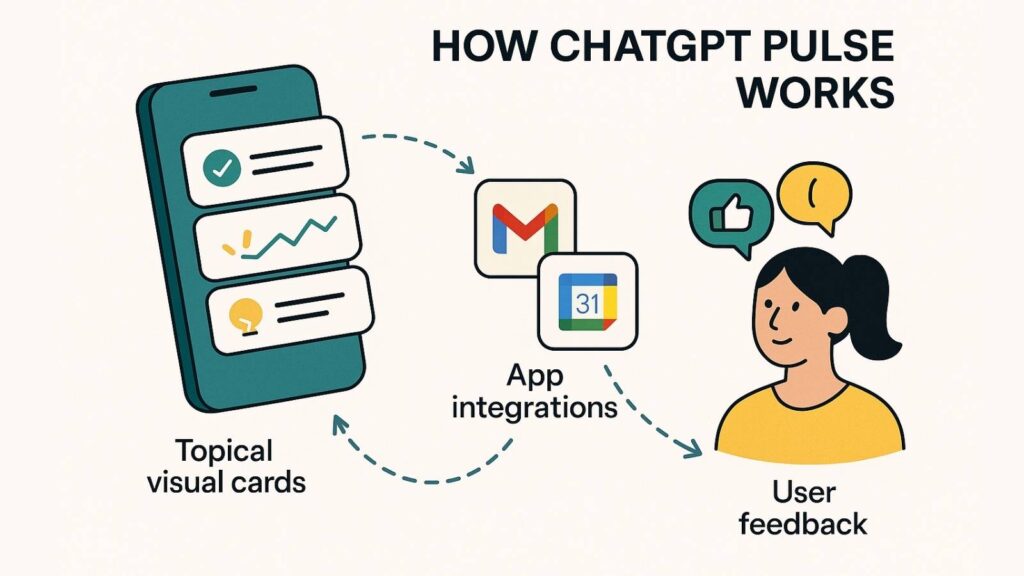
Another strategic implication is the increasing automation of knowledge work. We’ve seen automation in physical tasks and transaction processing; now we’re seeing it in researching, summarizing, and advising – activities typically done by analysts or knowledge workers. Pulse is an early example of an “ambient” or always-on agent that works in the background to advance your goals. This heralds a future where AI doesn’t just assist when asked, but continuously works alongside humans. As a result, the role of employees may shift to more high-level judgment and creativity, with AI handling the rote informational tasks. Executives and workers alike will need to adjust to this new partnership: it requires trust in the AI (to let it run with certain tasks) and new skills in guiding and overseeing AI outputs (since an AI briefing is now part of one’s daily toolkit).
Notably, OpenAI itself views Pulse as “the first step toward a new paradigm for interacting with AI”. By combining conversation, memory, and app integrations, ChatGPT is moving from simply answering questions to a proactive assistant that works on your behalf. This signals a broader technological trajectory. We can expect future AI systems to research, plan, and even execute routine actions “so that progress happens even when you are not asking”. In enterprise settings, that could mean AI agents initiating workflows – imagine Pulse not only telling you that a software build failed overnight, but automatically creating a ticket for the dev team and scheduling a brief stand-up to address it. We are not far off from AI that takes on more of a project management or coordination role in the background, orchestrating small tasks to keep the machine running smoothly. As one report succinctly put it, this development is shifting AI “from a passive tool to an active system that can independently serve business needs”. For knowledge flow, it means information will increasingly find you (the right person) at the right time, rather than you having to hunt for information. For automation, it means more white-collar workflows can be handled end-to-end by intelligent agents, with humans providing direction and final approval.
7. The Future of ChatGPT Pulse in AI-Driven Decision Making
Looking ahead, ChatGPT Pulse hints at a future where AI is deeply embedded in decision-making processes at all levels of the enterprise. The current version of Pulse is just the beginning – limited to daily research and suggestions – but OpenAI’s roadmap suggests it will grow more capable and connected. We can anticipate Pulse tying into a broader range of business applications: not just your calendar and email, but potentially your CRM, ERP, project management tools, data warehouses, and more. Imagine a future Pulse that, before your workday starts, has queried your sales database, your customer support ticket queue, and the latest market analytics, and then presents you with an integrated briefing: “Sales are 5% above target this week (driven by Product X in Region Y), two major clients have escalated issues that need personal attention, and a new competitor just entered our niche according to news reports.” This kind of multi-source synthesis would truly make AI an executive’s co-pilot in steering the business.
We’re already seeing signs of this trajectory. Early adopters of AI agents in business are experimenting with systems that perform more complex, multi-step tasks autonomously. Enterprises are actively exploring use cases for agents that not only inform but act – for example, an AI that can proactively initiate workflows on behalf of users. ChatGPT Pulse could evolve in that direction. OpenAI leaders have spoken about the “real breakthrough” coming when AI understands your goals and helps you achieve them without waiting to be told. In the context of Pulse, that might mean it won’t just tell you about a trend – it might also draft a strategy memo about how your company could respond, or it might automatically schedule a brainstorming meeting with relevant team members if you give it a nudge of approval. The groundwork for this is being laid in the current design: Pulse already connects to calendars and emails, and OpenAI is exploring ways for it to deliver “relevant work at the right moments throughout the day” (say, a resource popping up precisely when you need it). It’s a short step from delivering a resource to executing an action, once trust and reliability in the AI are established.
In terms of AI-driven decision making, the long-term potential is that Pulse becomes less of a separate feature and more of an integrated decision support system woven into daily operations. It could evolve into an enterprise-wide “knowledge nerve center” – one that not only briefs individuals but also detects patterns across the organization and raises flags or suggestions to the people best positioned to respond. For instance, if Pulse notices that multiple regional offices are asking the same question, it might alert corporate HQ about a possible knowledge gap or training need. If a certain KPI is dipping across several departments, Pulse might recommend a cross-functional meeting and supply the background material. Essentially, as it gains the ability to connect to more apps and ingest more realtime data, Pulse could function as an early warning and opportunity-detection system spanning the whole company.

OpenAI’s own vision supports this direction: they envision AI that can plan and take actions based on your objectives, operating even when you’re offline. Pulse in its current form introduces that future in a contained way – “personalized research and timely updates” delivered regularly to keep you informed. But soon it will likely integrate with more of the tools we use at work, and with that will come a more complete picture of context. We may also see Pulse delivering nudges throughout the day (not just in the morning) – for example, a quick Pulse check before a big client call, or at 4 PM a Pulse card might remind a product manager that it’s been 90 days since Feature A was launched and suggest looking at the usage analytics. Over time, as these assistants become more deeply trusted, they might even execute decisions within pre-set boundaries. A mature Pulse might auto-adjust some marketing spend based on early campaign results or reorder stock from a supplier when inventory runs low – basically crossing into the territory of autonomous decision implementation.
In summary, the future of Pulse points toward AI becoming a ubiquitous collaborator in the enterprise. It will accelerate and enhance human decision-making, not replace it. As OpenAI’s Applications CEO, Fidji Simo, remarked about this shift: moving from a chat interface to a proactive, steerable AI assistant working alongside you is how “AI will unlock more opportunities for more people”. One day, having an AI like Pulse might be as routine as having an email account – it will be the morning briefing, the research analyst, the project assistant, and the compliance checker all in one, quietly empowering employees to make better decisions every day. Organizations that embrace this shift early could see substantial gains in productivity, innovation, and responsiveness. Those that don’t may find themselves perpetually a step behind in the information race. Pulse today is daily briefings; Pulse tomorrow could be a central nervous system for the intelligent enterprise.
FAQ
How is ChatGPT Pulse different from regular ChatGPT or a news feed?
Unlike the standard ChatGPT which only responds when you ask something, ChatGPT Pulse works proactively. It automatically researches and delivers a personalized briefing each day based on your interests and data (calendar, emails, past chats). In essence, regular ChatGPT is reactive – you pose questions or prompts to get answers. Pulse flips that model: it’s more like a smart morning newsletter tailored just for you. It filters through information and suggests what’s relevant without you having to hunt for it. Traditional news feeds or newsletters are one-size-fits-all and require you to do the filtering. Pulse, by contrast, curates content specifically to your needs and even learns from your feedback to get better. It’s as if you had a researcher on staff who knows your priorities and hands you a brief each morning, rather than you spending time pulling info from various sources.
Can my whole team or company use ChatGPT Pulse, or is it only for individual users?
Right now, ChatGPT Pulse is available as a preview for individual ChatGPT Pro subscribers (on the mobile app). It’s not yet deployed as an enterprise-wide solution that companies can centrally manage for all employees. Essentially, an individual user – say an executive or manager – can use Pulse through their own ChatGPT account. OpenAI has indicated they plan to roll it out to more users (ChatGPT Plus subscribers and eventually wider audiences) as it matures, but at this stage it’s not a standard offering bundled into ChatGPT Enterprise. That said, companies keen to experiment could have key team members trial it with Pro accounts to gauge its usefulness. In the future, we can expect that OpenAI or third parties will offer more enterprise-integrated versions of Pulse once issues like data privacy, admin controls, and scaling are addressed. For now, think of it as a personal productivity tool with tremendous business potential, but not something like an “enterprise Pulse server” you can deploy to everyone just yet.
How does ChatGPT Pulse handle sensitive data and privacy? Is it GDPR-compliant?
ChatGPT Pulse respects the same data handling policies as ChatGPT. It uses content from your chat history and any connected apps only to generate your briefings. Those integrations (like email or calendar) are completely optional – they’re off by default, and you have to give permission to use them. If you do connect them, the data is used to tailor your results but still processed under OpenAI’s privacy safeguards. OpenAI anonymizes and encrypts data to protect personal information, and they have a privacy policy detailing how user data is managed (which is important for GDPR compliance). However, “full GDPR compliance” isn’t just on OpenAI – it also depends on how users and organizations employ the tool. For instance, a company using Pulse should avoid inputting any personal data that isn’t allowed out of a secure environment. Practically, this means you wouldn’t have Pulse read highly confidential documents or sensitive customer data unless you’re sure it’s permitted. Users can also delete chat history or turn off memory in ChatGPT if they want past data wiped. In short, Pulse can be used in a privacy-conscious way (and OpenAI has built-in measures to facilitate that), but companies should do their due diligence – treating Pulse like any cloud service when it comes to compliance. With proper usage – and perhaps additional enterprise features in the future – Pulse can be part of a GDPR-compliant workflow, but it’s wise to consult your IT and legal teams about any sensitive use cases.
Will AI daily briefings like Pulse replace human analysts or our existing reports/newsletters?
ChatGPT Pulse is a powerful automation tool, but it’s not a wholesale replacement for human expertise. What it can replace (or greatly reduce) is the rote work of gathering and synthesizing information. For example, if your team puts out a daily media monitoring report or an internal newsletter, Pulse can automate a large chunk of that by pulling in the latest info. However, human analysts add value through context, interpretation, and judgment. Pulse gives you facts and preliminary insights; it doesn’t know your business strategy or the nuanced implications of a particular development. In many cases, the best use of Pulse is to complement human work – it frees your analysts from spending hours on basic research so they can focus on deeper analysis and advising leadership on decisions. Some companies might indeed streamline routine report workflows and let Pulse handle the first draft, but you’ll still want humans to validate and augment those briefings. Also, Pulse is individualized – each user gets a custom brief. It won’t automatically know what the whole team needs unless everyone configures it that way. So newsletters and broad reports might still continue for a shared company perspective. In summary, expect Pulse to automate the mundane 60-70% of info gathering. The remaining critical thinking and decision-making pieces remain with humans, who are now armed with Pulse’s output. It’s more “augmentation” than “replacement.”
What are the limitations of ChatGPT Pulse today?
Since ChatGPT Pulse is a new and evolving feature, there are a few limitations to keep in mind. First, it currently runs on a fixed schedule (once per day in the morning). It’s not a real-time alert system, so if something big happens in the afternoon, Pulse won’t tell you until the next day’s briefing. Second, its suggestions are only as good as the data it has and the guidance you give. Early users have found that sometimes Pulse might surface an irrelevant tip or something you already know – for example, a suggestion for a project you’ve finished, or an outdated news item. It takes a little training via feedback to refine what it shows you. Third, Pulse doesn’t have deep integration with every enterprise system yet. It works great with web information and connected apps like Calendar or Gmail, but it’s not natively plugged into, say, your internal databases or Slack (unless you copy info over or an integration is built). So it may miss internal happenings that weren’t in your ChatGPT history or connected sources. Additionally, like any AI, Pulse can occasionally get things wrong. It might summarize a topic imperfectly or miss a nuance that a human would catch. That means users should treat it as an assistant – helpful for a head start – but still verify critical facts. Finally, access is limited (Pro preview on mobile), which is a practical limitation if you prefer desktop or if not everyone on your team can use it yet. These limitations are likely to be addressed over time as OpenAI improves the feature. For now, being aware of them helps you use Pulse effectively – lean on it for convenience and speed, but keep humans in the loop for judgment calls and fact-checking.

